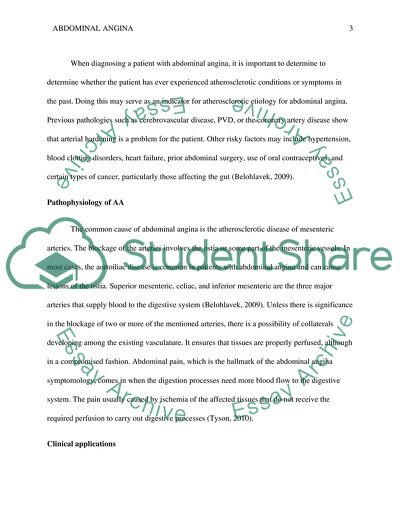Abdominal Angina Essay Example | Topics and Well Written Essays - 500 words. https://studentshare.org/medical-science/1859987-diagnosis-and-treatment-of-abdominal-angina
Abdominal Angina Essay Example | Topics and Well Written Essays - 500 Words. https://studentshare.org/medical-science/1859987-diagnosis-and-treatment-of-abdominal-angina.


